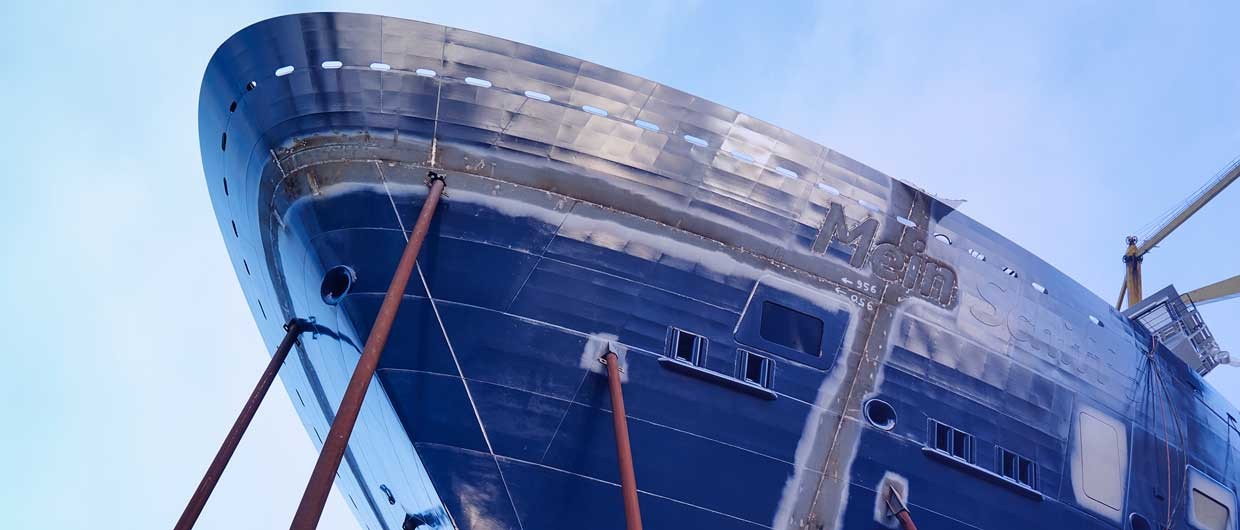Turning small pieces into something big
Meyer Turku shipyard specializes in building highly demanding, innovative and environmentally efficient cruise ships, car ferries and special vessels. Modular construction processes are used in modern shipbuilding to minimize the work needed to assemble a ship.
Each module is pre-assembled. These individual building blocks – up to 80 per ship – are put together at the dry dock. The modular construction process enables various expert teams to work simultaneously on a single ship. This reduces turnaround time significantly.
Cutting-edge design
Shipbuilding is a modern industry that brings together a wide variety of technologies in a limited space, unseen by our clients. Power supplies, air conditioning systems, fresh and wastewater technology, inventory management, waste management – it all must work smoothly. The amount of different materials that make up a ship is simply enormous. For example, the Mein Schiff ships built at our shipyard each required approximately 2,000 km of electric cables, 180 km of piping, 8,500 m² of windows, 335,000 litres of paint and 30,000 m² of carpets, among all other materials used. We process more than 15 million pieces for each and every cruise ship. To give you an idea of the scale, compare it with the roughly one million parts that go in an Airbus A 380 or the 10,000 or so components that make up a passenger car.
Developing and building cruise ships is an extraordinarily complex and challenging operation. This is why computer-assisted technology has been integrated into every phase from design to completion. How many kilometres of cable does a ship need and how much does it cost? How should weight be distributed to compensate for the wind and the waves? When do you need to start each production stage to ensure you are on schedule to deliver to the shipping company? What materials should be used to ensure fire safety and sound proofing? These are the types of questions that our designers must solve on a daily basis – on top of countless others. This is why the design and building of ships makes extensive use of virtual 3D models and moving visualisations. Calculations have to be remade for each new ship to ensure unique, customized design.
The work at our shipyard reflects the Industry 4.0 principles: all stages are designed, processed and managed with digital and highly automated methods. In the end, each and every pinion must fit precisely to make sure that we achieve the highest possible quality within agreed budgets and schedules.
A TEST RUN AS THE FINAL STAGE IN THE PROCESS
We carefully test each ship both at the dock and at sea before handing it over to the client. During the tests at the sea, all equipment and systems go through final testing and calibration for optimal performance. The inter-operability of systems and equipment is also tested at sea while the ship’s future crew practices their duties.
